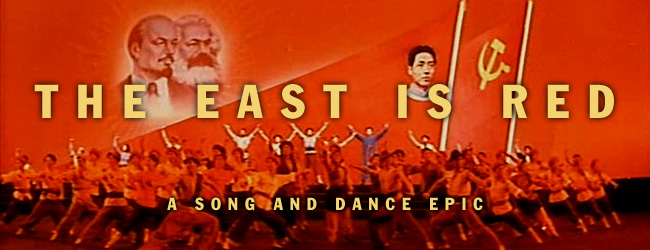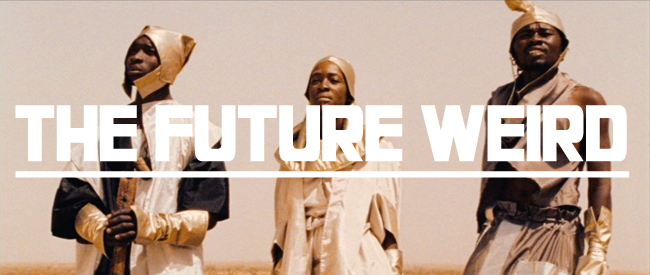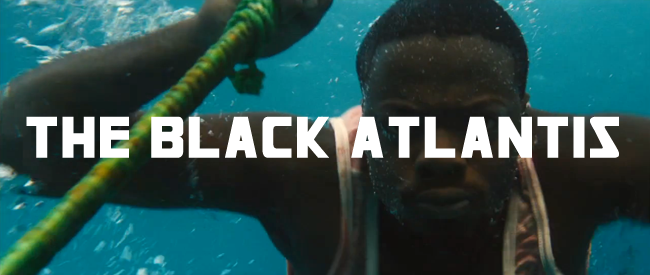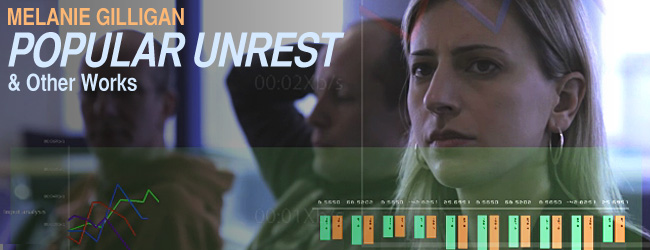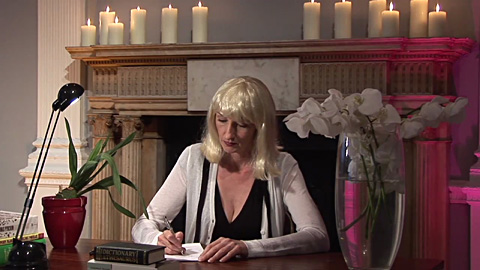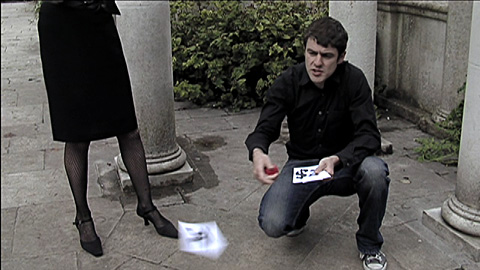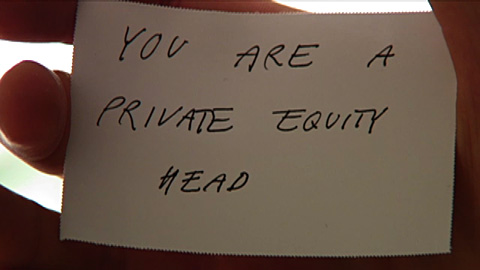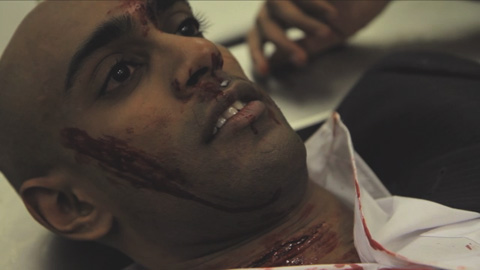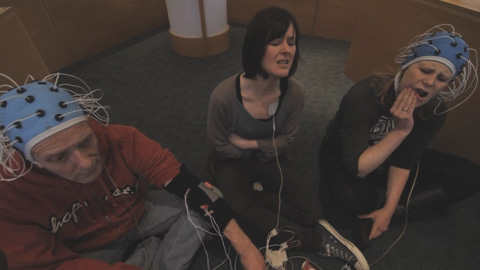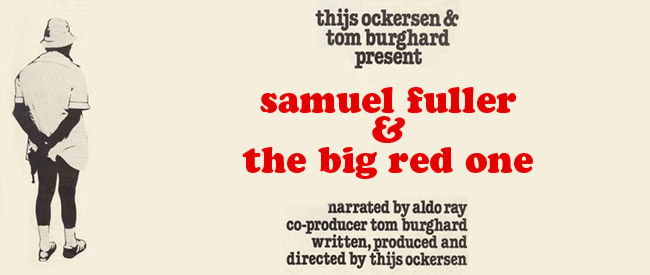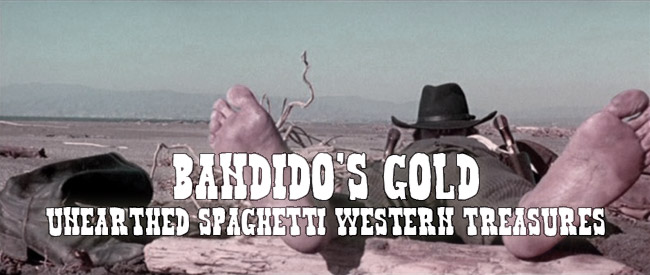
This quartet of lesser known, yet truly great spaghetti westerns is chocked full of gripping action, relentless violence, and brooding intensity with gritty style to spare.
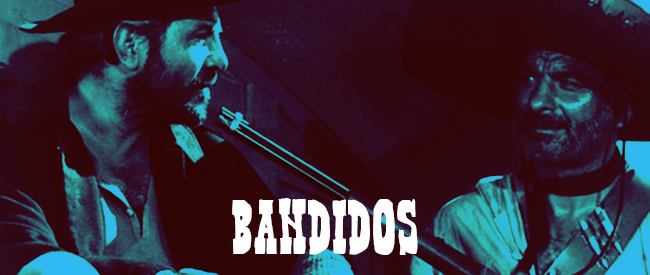
BANDIDOS
Dir. Massimo Dallamano 1967.
Italy. 91 min.
SATURDAY, SEPTEMBER 14 – 7:30 PM
SUNDAY, SEPTEMBER 29 – 10:00 PM
Outlaw Billy Kane holds up a train only to find his former mentor-of-arms, renowned gunman Richard Martin, is one of the passengers. Kane shoots Martin’s hands before letting him escape. Years later Martin meets Ricky Shot (!), an escaped convict who was falsely accused for the robbery. He takes Shot under his wing and together they head on the trail of vengeance.
This standout spaghetti western was the directorial debut of A Fistful of Dollars cinematographer Massimo Dallamano. It was also his last western, though he went on to make other excellent films, including the infamous giallo What Have they Done to Solange? and the poliziotteschi Colt .38 Special Squad. Though uncredited, it is reported that Dallamano also shot Bandidos, which would explain its incredibly accomplished and distinct look, featuring brilliant panoramas and deep focus. A tight, compelling, highly revered, and ESSENTIAL spaghetti western.
Read more about BANDIDOS on the Spaghetti Western Database, whose reviewer states that “Dallamano probably comes closer to Leone than any other director of spaghetti westerns.”
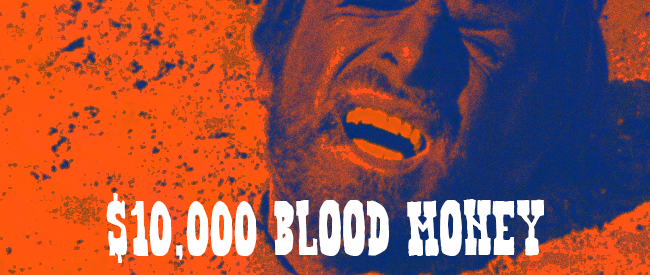
$10,000 BLOOD MONEY
Dir. Romolo Guerrieri 1967.
Italy. 94 min.
SATURDAY, SEPTEMBER 21 – 10:00 PM
MONDAY, SEPTEMBER 30 – 10:00 PM
Rogue bounty hunter Django mockingly taunts low-life bandit Manuel, who only has a measly $3,000 price on his head. Inspired by spite, hatred and villainous pride, Manuel ups the stakes, first with murder, and then by kidnapping a land baron’s daughter, finally netting Django’s $10,000 bounty minimum. But when Manuel ruthlessly targets Django’s saloon girl lover Mijanou (Loredana Nusciak from Django), vengeance becomes the main incentive, transforming the hunt into an ornery blood feud.
The first in a pair of inspired bounty hunter films from the crafty production team of Mino Loy and the late Luciano Martino (brother of Sergio), and the pen of prolific screenwriter Ernesto Gastaldi. Featuring spaghetti western stalwart Gianni Garko (Sartana) as the ‘good’ and Claudio Camaso as ‘the bad.’ Its high style, surreal touches, fully loaded tropes, extreme anti-heroics, amorality and existentialism all add up to an exemplary spaghetti western. NOT TO BE MISSED!
Read more about $10,000 BLOOD MONEY on the Spaghetti Western Database, which calls it “one of the best unofficial Django films … beautiful, almost surreal” and “one of the finest Italian Westerns ever made.”
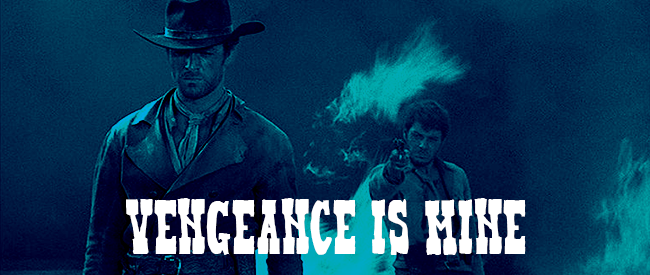
VENGEANCE IS MINE
Dir. Gianni Fago 1967.
Italy. 91 min.
WEDNESDAY, SEPTEMBER 4 – 7:30 PM
SUNDAY, SEPTEMBER 22 – 10:00 PM
Gianni Garko and Claudio Camaso breathe more life into their anti-hero and villain roles from $10,000 Blood Money, here with an added Cain-and-Abel-like classicism. This time it’s John the bounty hunter (Garko) versus army deserter-turned-outlaw Clint (Camaso), half-brothers, embittered with extreme mutual hatred. John just served time, falsely accused of his father’s murder by none other than Cint. Can John keep his promise to his mother to bring Clint in alive?
Vengeance is Mine (aka $100,000 Per Killing) further explores morality via bounty hunters and bandits strongly linked by their existential attitudes towards money, life, and death; provocative ideas thrillingly played out against a satisfyingly gritty landscape. High production values, surprising plot twists, violent set pieces, and a hint towards profundity prove both films top entries in the genre.
Read more about VENGEANCE IS MINE on the Spaghetti Western Database, whose reviewer states that it is “probably as close as an Italian genre movie from the sixties … could get to Greek and Victorian drama.”
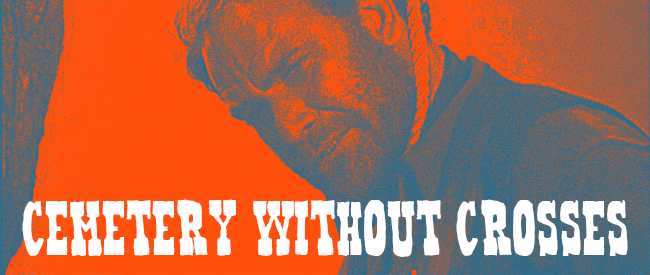
CEMETERY WITHOUT CROSSES
Dir. Robert Hossein 1969.
Italy. 85 min.
MONDAY, SEPTEMBER 9 – 10:00 PM
SATURDAY, SEPTEMBER 28 – 7:30 PM
CEMETERY WITHOUT CROSSES (Robert Hossein, 1969) from Spectacle Theater on Vimeo.
After her husband is mercilessly hanged by a ruthless land baron, Maria implores Manuel, an old flame, to infiltrate the killer’s ranch and wreak vengeance. Manuel reluctantly leaves the ghost town where he lives to embark on the mission, but is ever haunted by his unrequited affection for Maria
Prolific French actor Robert Hossein directed and starred in this inspired homage to his friend Sergio Leone. As sharpshooter Manuel, he dons one black glove (channeling the cool of garage rock band The Music Machine?) and imbues the whole production with laconic ennui. A visually striking and brooding picture, the requisite gritty and violent tropes are delivered with an artistic fervor ahead of its time. A MUST SEE!
Read more about CEMETERY WITHOUT CROSSES on the Spaghetti Western Database, whose reviewers call it “not your average spaghetti,” and “a truly moving classic of the genre.”

